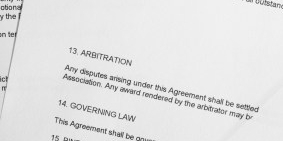Some seem to think that a creditor plaintiff always has to sue to collect a debt in the debtor defendant’s county of domicile. While the latter’s county is proper venue, it may not be the only proper venue. There may be more than one county in which one properly may file suit.
Often, contract documents will specify that venue is proper in one specific county. Generally, that would control.
However, improper venue is a waivable defect. The plaintiff may sue in the “wrong” county. However, if the defendant does not file a motion to change venue to the proper county, the defendant would be stuck with the “wrong” county.
What happens if no venue is specified in the contract documents?
Generally, that means the county in which the creditor plaintiff is situated would be the proper county in which to sue. This is because performance under the contract, e.g. payment, is due where the creditor is. So, even if the debtor defendant is in another county, the plaintiff can sue in his/her/its home county. (See Hale v. Bohannon (1952) 38 Cal. 2d 458, 467 [9].)
Venue (and jurisdiction) rules can be tricky. As with most aspects of the law these days, one needs to hit the books (or the computer, as the case may be).
Disclaimer
Related Posts
January 18, 2011
Right to Arbitrate May be Waived by Proceeding With a Lawsuit
The California Court of Appeal recently…




